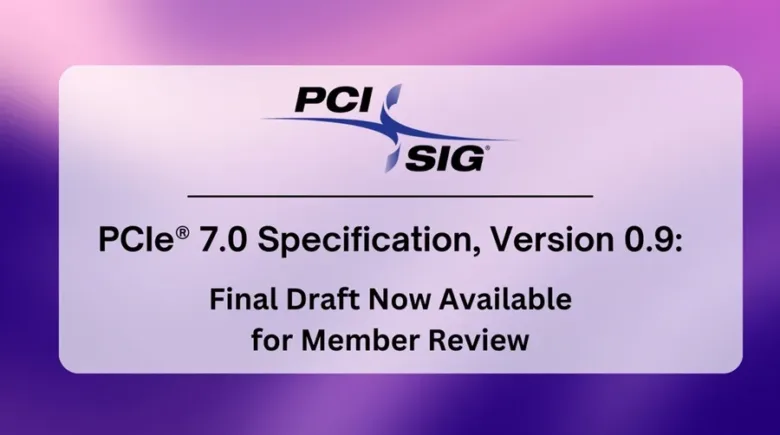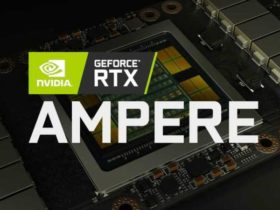PCI-SIG, the organization behind the ubiquitous PCI Express (PCIe) standard, has announced the release of the PCIe 7.0 version 0.9 specification for member review. This latest milestone brings the next generation of high-speed interconnect technology closer to completion, boasting a raw data transfer rate of 128 GT/s (Gigatransfers per second), doubling the bandwidth of its predecessor, PCIe 6.0.
The PCIe 7.0 v0.9 specification, now available to PCI-SIG members for feedback and refinement, marks a significant step toward finalization, expected in 2026. This version highlights the organization’s ongoing commitment to meeting the escalating performance demands of data-intensive applications, including artificial intelligence, high-performance computing, gaming, and enterprise storage.
Key Features of PCIe 7.0
- 128 GT/s Raw Data Rate: PCIe 7.0 delivers up to 128 GT/s in a x16 configuration, enabling a bidirectional bandwidth of up to 512 GB/s (assuming no encoding overhead). This is a fourfold increase over PCIe 5.0’s 32 GT/s and twice that of PCIe 6.0’s 64 GT/s.
- PAM4 Signaling: Continuing the use of Pulse Amplitude Modulation with 4 levels (PAM4), introduced in PCIe 6.0, to achieve higher data rates within constrained channel bandwidths.
- Backward Compatibility: Like previous iterations, PCIe 7.0 maintains full backward compatibility with all prior PCIe generations, ensuring seamless integration with existing hardware.
- Improved Power Efficiency: Optimizations in signaling and architecture aim to balance performance with energy efficiency, critical for data centers and mobile applications.
- Enhanced Reliability: Advanced error correction and low-latency features to support mission-critical workloads.
“PCIe 7.0 is a testament to PCI-SIG’s dedication to pushing the boundaries of interconnect performance,” said Al Yanes, President and Chairperson of PCI-SIG. “The v0.9 release allows our members to evaluate and contribute to a specification that will empower the next wave of innovation in AI, cloud computing, and beyond.”
Addressing Future Demands
The exponential growth of data-driven technologies has placed unprecedented demands on interconnects. PCIe 7.0’s massive bandwidth is designed to support emerging use cases such as:
- AI and Machine Learning: Accelerating training and inference for large language models and generative AI.
- Data Centers: Enabling faster communication between CPUs, GPUs, and storage in hyperscale environments.
- Networking: Supporting 800G Ethernet and beyond for ultra-low-latency connectivity.
- Storage: Powering next-generation NVMe drives with unparalleled throughput.
Timeline and Availability
The PCIe 7.0 v0.9 specification is currently accessible only to PCI-SIG member companies for review and feedback. The final PCIe 7.0 specification (version 1.0) is targeted for release in 2026, with commercial products expected to follow in 2027 or later, depending on market adoption.
PCI-SIG encourages its members to provide input during this review phase to ensure the specification meets the diverse needs of the industry. Non-members interested in participating can join PCI-SIG to access the draft and contribute to the development process.
Looking Ahead
With PCIe 7.0, PCI-SIG continues its tradition of doubling bandwidth roughly every three years, keeping pace with Moore’s Law and the rapid evolution of computing. As industries increasingly rely on high-speed, low-latency interconnects, PCIe 7.0 is poised to become the backbone of future systems, from consumer PCs to enterprise-grade infrastructure.
















Leave a Reply